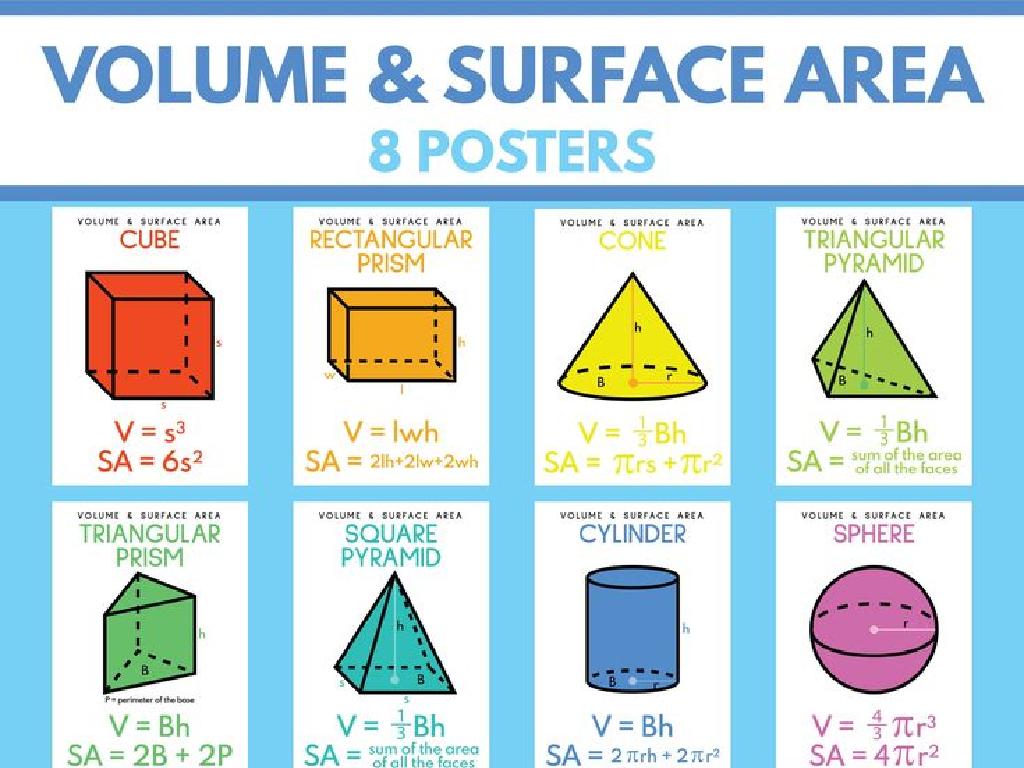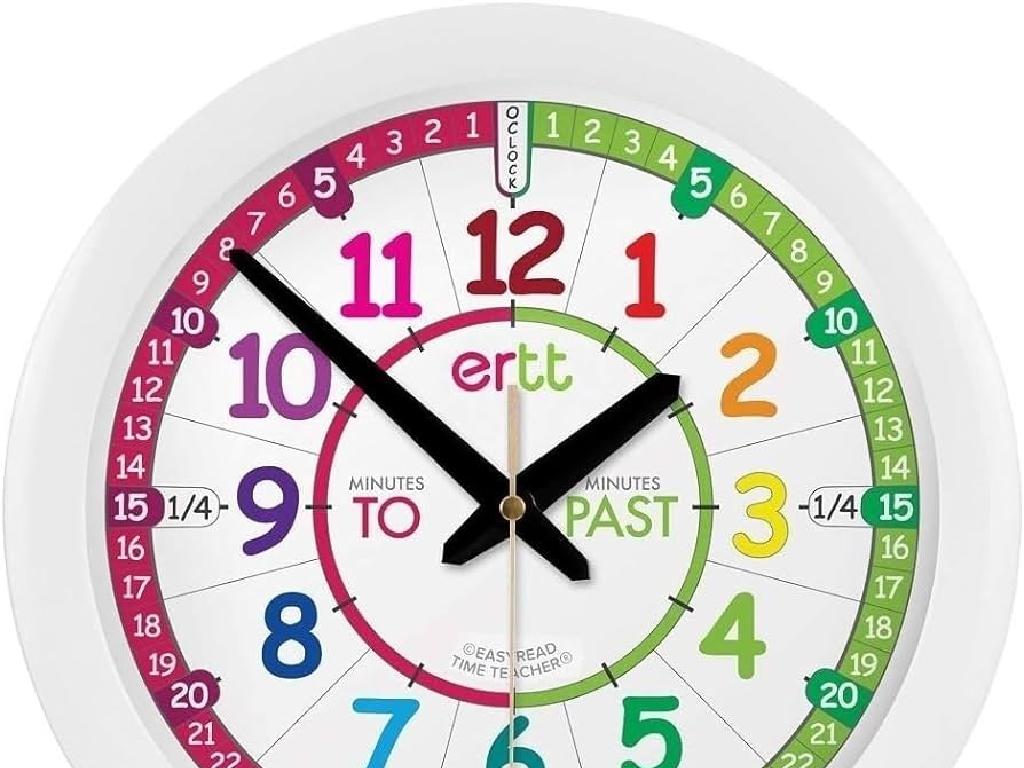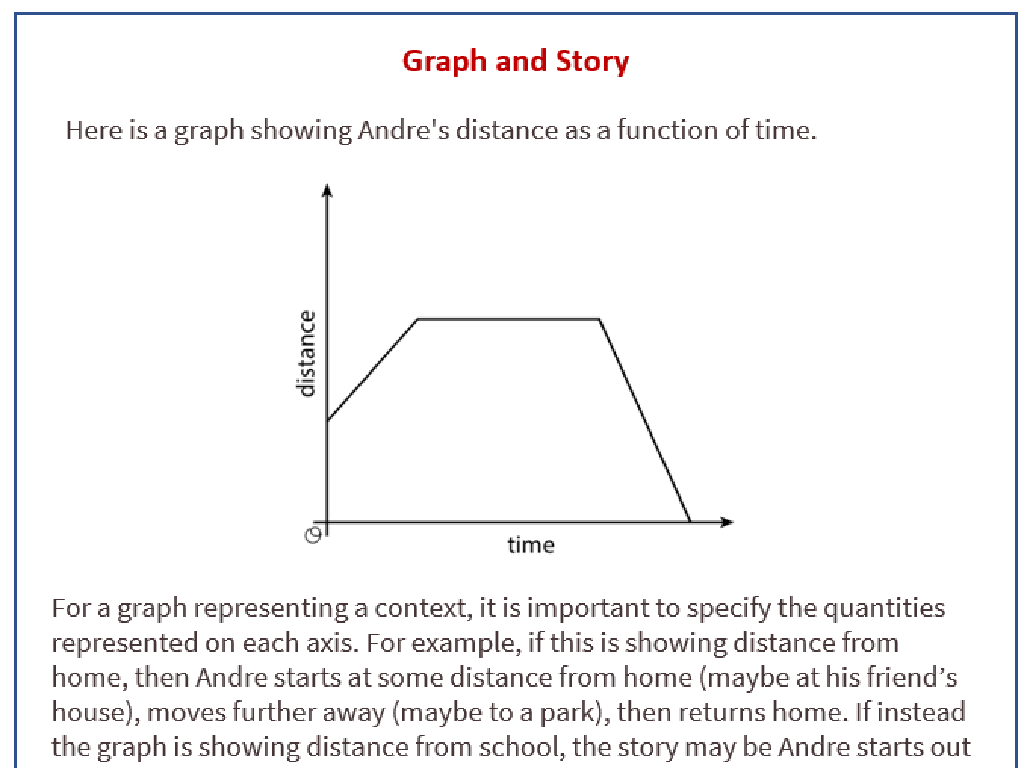Customary Units Of Length: Word Problems
Subject: Math
Grade: First grade
Topic: Measurement
Please LOG IN to download the presentation. Access is available to registered users only.
View More Content
Welcome to Measurement!
– Understanding Measurement
Measurement is finding out how long or heavy something is.
– Reasons we measure
We measure to know how much, how long, or how heavy.
– Tools we use for measuring
We can use rulers, measuring tapes, or even our hands!
– Practice measuring objects
Let’s measure items like pencils, books, and shoes.
|
This slide introduces the concept of measurement to first graders. Start by explaining that measurement is a way to find out the length, height, or weight of something. Discuss why measurement is important in everyday life, such as knowing if a bed will fit in a room or buying the right amount of paint for a wall. Show different tools we can use to measure things, like rulers for length or scales for weight. Encourage the children to think of times they have seen someone measure something. For the activity, have a variety of objects available for the students to measure with their chosen tool. This will help them understand the practical application of measurement and get hands-on experience.
Understanding Length: How Long Is It?
– Length measures how long things are
– Tools we use to measure length
– Rulers, measuring tapes, and yardsticks help us find length
– Inches, feet, and yards
– Smaller objects are measured in inches, larger in feet or yards
– Choosing the right unit
– Use inches for a pencil, feet for a bed, yards for a football field
|
This slide introduces the concept of length and its importance in everyday life. Explain that length measures the distance from one end of an object to the other. Show different tools we can use to measure length, such as rulers for small objects, measuring tapes for medium-sized items, and yardsticks for larger distances. Discuss the common units of length, emphasizing that inches are for small objects, feet for items of moderate size, and yards for the biggest objects. Provide examples for each unit to help students visualize when to use them. For instance, we use inches to measure the length of a pencil, feet to measure the length of a bed, and yards to measure the length of a football field. Encourage students to think of other examples and to practice measuring items at home.
Understanding Customary Units of Length
– Inches are small units
– Feet are longer, 12 inches = 1 foot
– For example, a pencil is about the length of 3 inches
– Yards are longer, 3 feet = 1 yard
– A guitar is as long as 1 yard
– Practice with real objects
– Measure items at home using inches, feet, or yards
|
This slide introduces the basic customary units of length to first graders. Start by explaining that inches are the smallest unit among the three and can be used to measure small objects like a pencil. Then, describe how feet are a larger unit, suitable for measuring things like the length of a skateboard. Emphasize that 12 inches make up 1 foot. Next, explain that yards are used for even longer measurements, such as the length of a bed, with 3 feet equalling 1 yard. To reinforce learning, encourage students to measure various items at home using these units and bring their findings to class for discussion. This practical activity will help them grasp the concept of length measurement in a fun and interactive way.
Let’s Practice Measuring!
– Using rulers to measure objects
– Start measuring from the 0 mark
– Always begin at the start line of the ruler
– Look straight down at the ruler
– This helps you see the correct length
– Measure pencils, books, and more
|
This slide is designed to introduce first graders to the concept of measuring objects using rulers. Emphasize the importance of starting at the 0 mark to ensure accuracy. Demonstrate how to hold the ruler and the object being measured, and how to align eyes directly above the ruler for a precise reading. Use everyday classroom objects like pencils and books for practice. Activities can include measuring different items with a partner, recording their lengths, and comparing measurements. Encourage students to ask questions and assist each other in measuring. This hands-on experience will help solidify their understanding of using rulers and measuring lengths in customary units.
Understanding Length with Word Problems
– Word problems show real-life measurement
– Read to find length clues
– Look for words like ‘tall’, ‘long’, ‘wide’, or ‘high’.
– Choose inches, feet, or yards
– Use inches for small objects, feet for medium, yards for big things.
– Solve problems with the right unit
– Practice with examples like pencil length or room size.
|
This slide aims to introduce first graders to the concept of using customary units of length to solve word problems. Emphasize the importance of understanding the context to determine the appropriate unit of measurement. Guide the students through the process of identifying keywords in the problem that indicate length. Discuss when to use each unit: inches for small items like a book’s width, feet for something a bit larger like a bed’s length, and yards for even larger items like the length of a football field. Provide simple, relatable examples and encourage students to visualize the objects mentioned in the problems to better grasp the concept of size and the appropriate unit to use.
Comparing Lengths: Pencil vs. Notebook
– Pencil length: 7 inches
– Notebook length: 1 foot
– Convert feet to inches
– 1 foot is the same as 12 inches
– Which is longer?
– Compare: 7 inches or 12 inches?
|
This slide introduces students to comparing lengths using customary units of measurement. Start by explaining that different objects can be measured in inches or feet. Show them how to convert feet into inches using the equivalence that 1 foot equals 12 inches. Once the notebook’s length is converted to inches, students can easily compare the lengths of the pencil and the notebook. Encourage the students to think about the sizes of objects they use daily and how they might compare them. This exercise will help them understand the practical application of measurement and conversion between different units.
Class Activity: Measure and Compare!
– Find 3 objects to measure
– Measure each object in inches
– Use the ruler carefully from one end to the other
– Record your measurements
– Write down the number it shows near the object’s end
– Share the longest & shortest
|
This activity is designed to give students hands-on experience with measuring objects using customary units (inches). Provide each student with a ruler and explain how to align it with the object’s edge for accurate measurement. Encourage them to find objects of different lengths. After measuring, they should write down their findings and be prepared to discuss which object was the longest and which was the shortest. For the teacher: Prepare a list of objects that students can measure in case they have trouble choosing. Suggest items like a pencil, an eraser, a book, etc. Have a discussion afterward to ensure understanding and to celebrate their discoveries. This activity will help reinforce the concept of length and the use of customary units of measurement.
Celebrating Measurement Mastery
– Congratulations on learning lengths!
– Measurement describes and compares
– Like comparing pencils and books
– Practice makes perfect
– Try measuring items at home
– You’re on your way to expertise!
|
This slide is designed to congratulate first graders on their hard work learning about customary units of length and to encourage them to keep practicing their new skills. Emphasize the importance of measurement in everyday life, such as determining who is taller, or which object is longer or shorter. Encourage them to measure objects at home with their parents or guardians to reinforce their understanding. Remind them that with practice, they will become measurement experts. Celebrate their achievements and encourage a positive attitude towards learning more about math and measurement.






